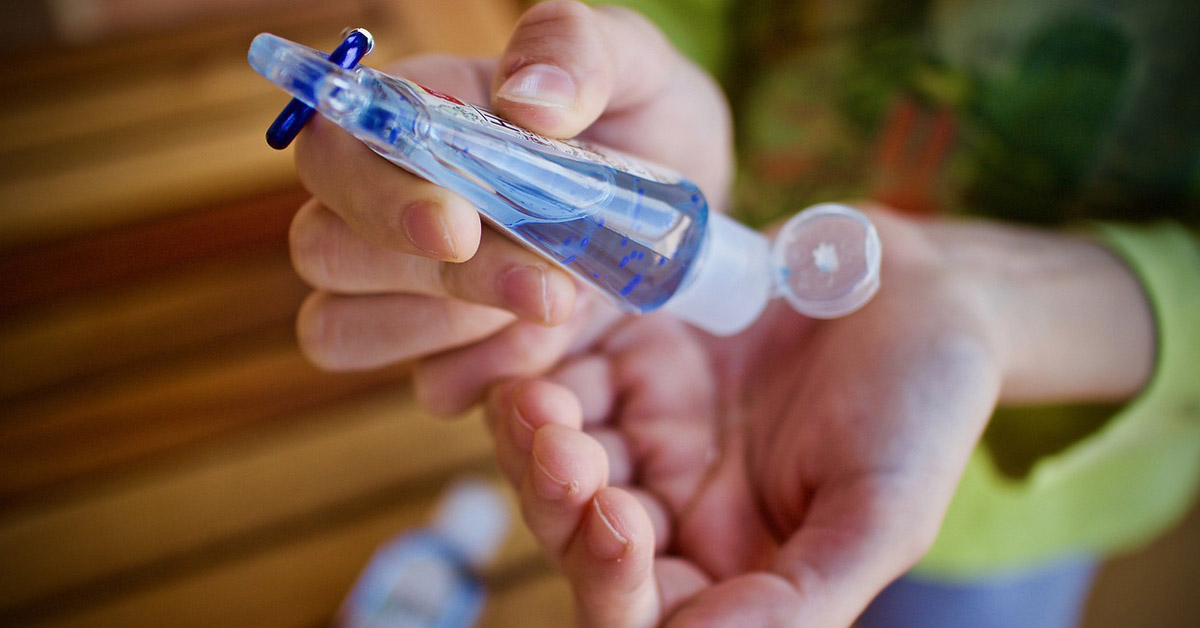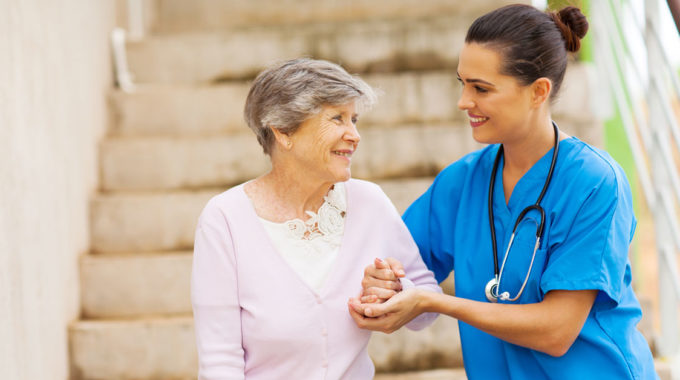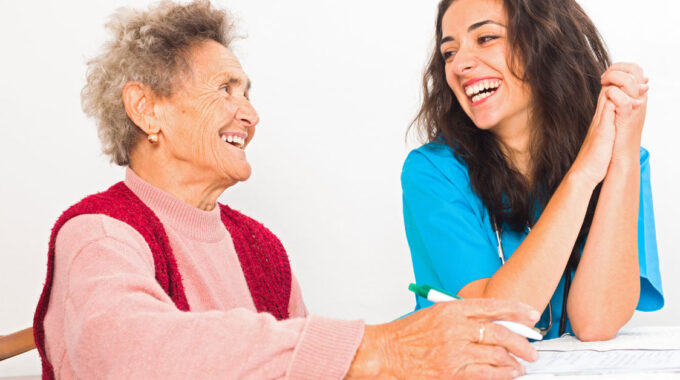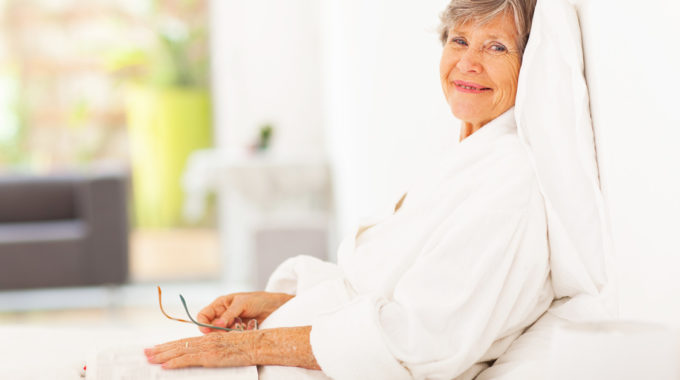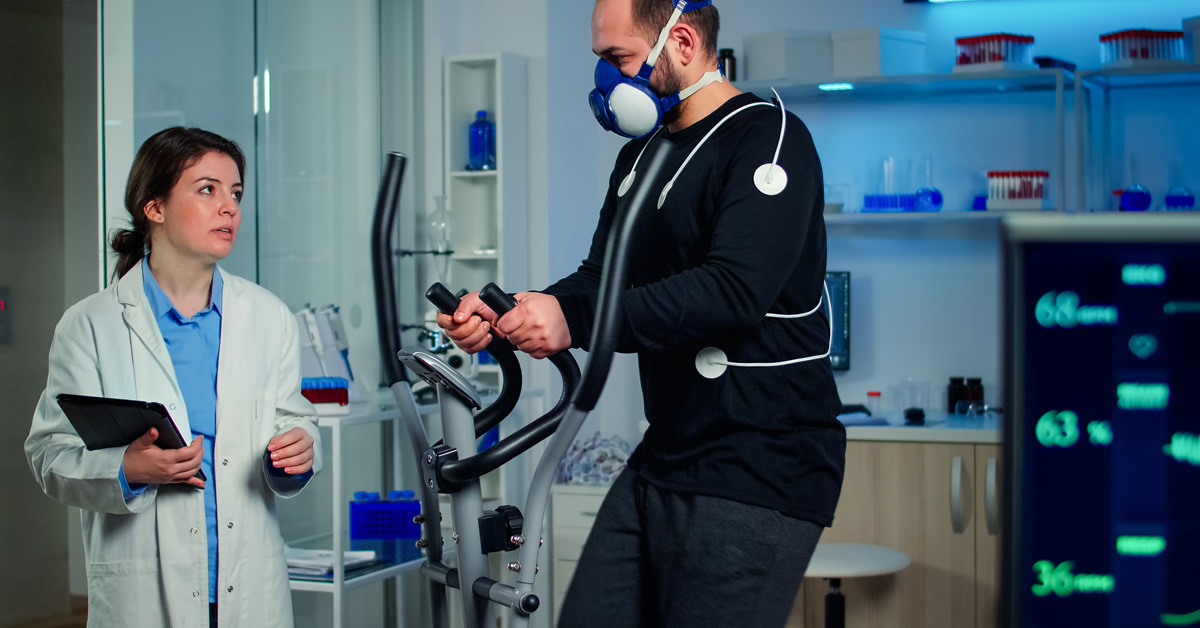
Post-COVID Exercise Impairment – What We’ve Learned
While healthcare has been rapidly building knowledge about COVID-19, data regarding post-COVID, long-term effects is only beginning to trickle in. In January, the European Respiratory Journal published one such study. Kathleen Jahn, and her colleagues from the University of Basel, found that a striking percentage of patients continue to demonstrate exercise intolerance 90 days after hospital discharge, despite receiving inpatient rehabilitation. Moreover, the study adds to a trend of data suggesting that muscle deconditioning, more than pulmonary limitations, serves as the driving force behind cases of reduced exercise tolerance lasting longer than three months.1 The authors state that their results underscore the importance of rehabilitation following severe COVID-19 infection. When patients are homebound, home health can serve as an ally in that rehabilitation with Medicare paying 100%.
The Effects of COVID-19 Pneumonia
SARS-CoV-2 can cause severe pneumonia with dry cough, dyspnea, hypoxemia, and diffuse ground-glass opacities on computed tomography.2 Reduced exercise capacity following a case of COVID-19 is common.3
The Extent of Post-COVID Exercise Intolerance
In the current study, Jahn et al. followed 44 of their patients discharged alive after severe pneumonia from COVID-19. All patients received both inpatient and outpatient physical therapy. At three months, all patients received cardiopulmonary exercise testing. This consisted of various measurements of breathing and gases while using a cycle ergometer. Surprisingly, more than half (54%) of patients continued to demonstrate exercise intolerance three months after hospital discharge. This was evidenced in part by impaired VO2max. VO2max serves as a strong predictor of future health, all-cause mortality, and cardiovascular risk.4
The Cause of Post-COVID Exercise Intolerance
The other surprise was what was causing the exercise intolerance. Despite the severity of COVID -19 pneumonitis, only 14% of survivors experienced pulmonary limitation after three months. While 100% received physical therapy, 23% were additionally sent to inpatient pulmonary rehab, and 9% were sent to outpatient pulmonary rehab. Among those with exercise impairment, the main limiting factor was ongoing muscle deconditioning for 47%, cardiovascular for 26%, and pulmonary limitations for 26%. Most of the people in the cardiovascular group had pre-existing cardiovascular conditions. The current study adds to the data of two other studies finding muscle deconditioning to be the primary cause of prolonged exercise intolerance after COVID-19.5,6 Furthermore, the strong role of muscle deconditioning gives encouragement for the role of general physical therapy in restoring exercise capacity among these patients.
Post-COVID Home Health Rehab
Medicare-certified home health should be one option for patients discharged to home following a severe COVID-19 infection. In cases of cardiovascular, muscular, and pulmonary origin, home health rehab has been shown to dramatically improve exercise tolerance, dyspnea scores, maximum phonation time, peak expiratory flow, and quality of life.7-9 Furthermore, even COVID-19 patients with poor symptom and functional profiles have been shown to fare well in home health.10
References
- Jahn K, Sava M, Sommer G, Schumann DM, Bassetti S, Siegemund M, Battegay M, Stolz D, Tamm M, Khanna N, Hostettler KE. Exercise capacity impairment after COVID-19 pneumonia is mainly caused by deconditioning. European Respiratory Journal. 2022 Jan 1;59(1).
- Li X, Zeng W, Li X, Chen H, Shi L, Li X, Xiang H, Cao Y, Chen H, Liu C, Wang J. CT imaging changes of corona virus disease 2019 (COVID-19): a multi-center study in Southwest China. Journal of Translational Medicine. 2020 Dec;18(1):1-8.
- Paneroni M, Simonelli C, Saleri M, Bertacchini L, Venturelli M, Troosters T, Ambrosino N, Vitacca M. Muscle strength and physical performance in patients without previous disabilities recovering from COVID-19 pneumonia. American Journal of Physical Medicine & Rehabilitation. 2021 Feb 1;100(2):105-9.
- DeFina LF, Haskell WL, Willis BL, Barlow CE, Finley CE, Levine BD, Cooper KH. Physical activity versus cardiorespiratory fitness: two (partly) distinct components of cardiovascular health?. Progress in Cardiovascular Diseases. 2015 Jan 1;57(4):324-9.
- Rinaldo RF, Mondoni M, Parazzini EM, Pitari F, Brambilla E, Luraschi S, Balbi M, Papa GF, Sotgiu G, Guazzi M, Di Marco F. Deconditioning as main mechanism of impaired exercise response in COVID-19 survivors. European Respiratory Journal. 2021 Jan 1.
- Skjørten I, Ankerstjerne OA, Trebinjac D, Brønstad E, Rasch-Halvorsen Ø, Einvik G, Lerum TV, Stavem K, Edvardsen A, Ingul CB. Cardiopulmonary exercise capacity and limitations 3 months after COVID-19 hospitalisation. European Respiratory Journal. 2021 Aug 1;58(2).
- Murphy N, Bell C, Costello R. Extending a home from hospital care programme for COPD exacerbations to include pulmonary rehabilitation. Respir Med. 2005; 99(10): 1297-302.
- Bausek N, Havenga L, Aldarondo S. Respiratory muscle training improves speech and pulmonary function in COPD patients in a home health setting-a pilot study. BioRxiv. 2019 Jan 1:523746.
- Stewart S, Wiley JF, Ball J, et al. Impact of nurse-led, multidisciplinary home-based intervention on event-free survival across the spectrum of chronic heart disease: composite analysis of health outcomes in 1226 patients from 3 randomized trials. Circulation. 2016 May 10;133(19):1867.
- Bowles KH, McDonald M, Barrón Y, Kennedy E, O’Connor M, Mikkelsen M. Surviving COVID-19 After Hospital Discharge: Symptom, Functional, and Adverse Outcomes of Home Health Recipients. Annals of Internal Medicine. 2020 Nov 24.

